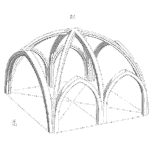
Just a couple of sample questions from deep in the body of knowledge this week.
Which of the following can be evaluated with dye penetrant methods?
a. Sub-surface cracks in metals
b. Newton’s rings
c. Surface cracks on non-metals
d. Surface porosity on styrofoam
and,
Preventative maintenance is characterized by:
a. Replacing failed/defect items as they are found in normal service use
b. A planned program of tests, inspections, and/or replacements
c. Replacing items just before they fail
d. Lowering fault isolation times and improving part accessibility
Post your responses and reasons in the comments section below. This two may provide some insight into how some of the questions are asked and how to think through how to select the appropriate answer.
Related:
First 5 Questions (article)
Sample Size – success testing (article)
OC Curve with Binomial Method (article)
 Ask a question or send along a comment.
Please login to view and use the contact form.
Ask a question or send along a comment.
Please login to view and use the contact form.
Surface cracks on non-metals.. and second one A planned program of tests, inspections, and /or replacements for the preventive maintenance …
Good, now why? what was wrong with other responses, and why was your choice the best?
Ok…Let’s try to answer
a. Sub-surface cracks in metals — no, dye penetrant method only detect surface crack, doesn’t matter if it is metal or non-metal
b. Newton’s rings — sorry, no idea what it is…
c. Surface cracks on non-metals — yes, as long as the material is non-porous
d. Surface porosity on styrofoam — I guess this material is porous which is not suitable as dye penetration method rely on capillary action.
so the best guess is C….right???
P.S. I found this method works very well on structures with simple shape but does not display very well on complex structure (a mix of curves and discontinuous surface). As the structure is more complex, the results is more depend on operator experience (I am new to reliability engineering with less than a year experience). Perhaps it is best practice to carry out MSA before deciding dye penetrant method as the standard method to detect cracks on products…
I am preparing for CRE on March 2nd. The following practice question is challenging me.
Which of the following statements is true about estimating the MTBF from operational data?
A. The MTBF is expected to be much shorter than MTTF.
B. The confidence limit should be included with the MTBF measurements
C. The failure rate must follow a Weibull distribution
D. The failure rate is calculated as 1/MTBMA
Keron The confidence limit should be included with the MTBF measurements should be the right answer in my sense. Please correct any one if I am wrong.